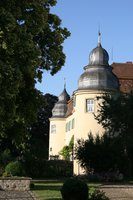Die magischen Orte des Frankenweins
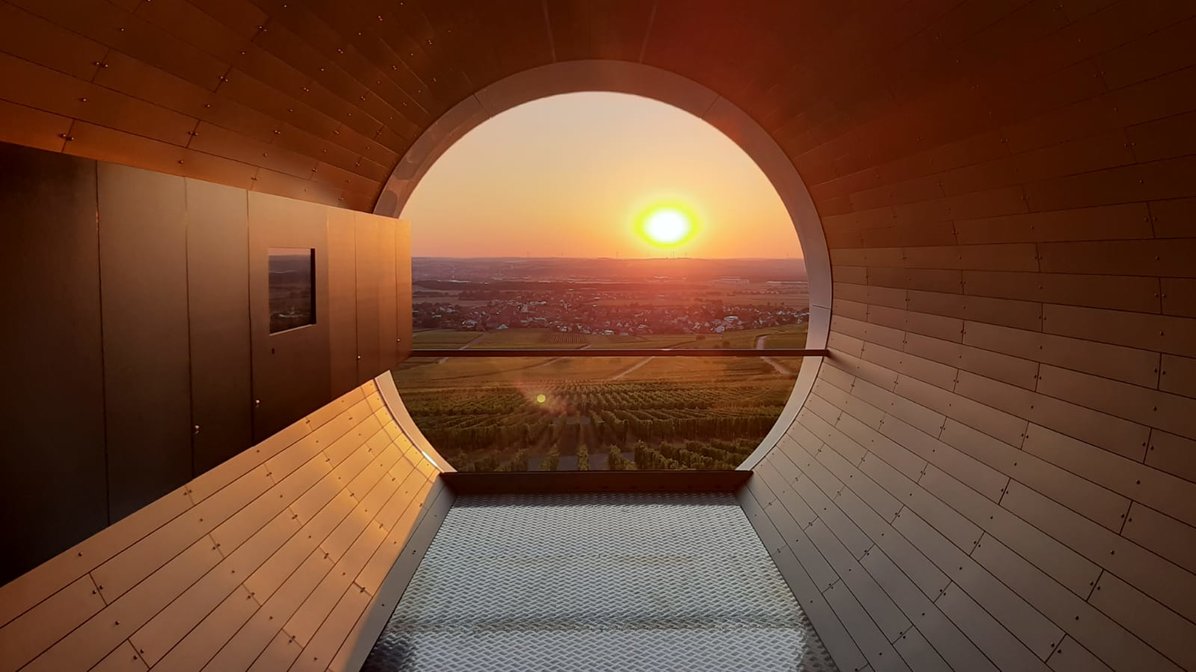
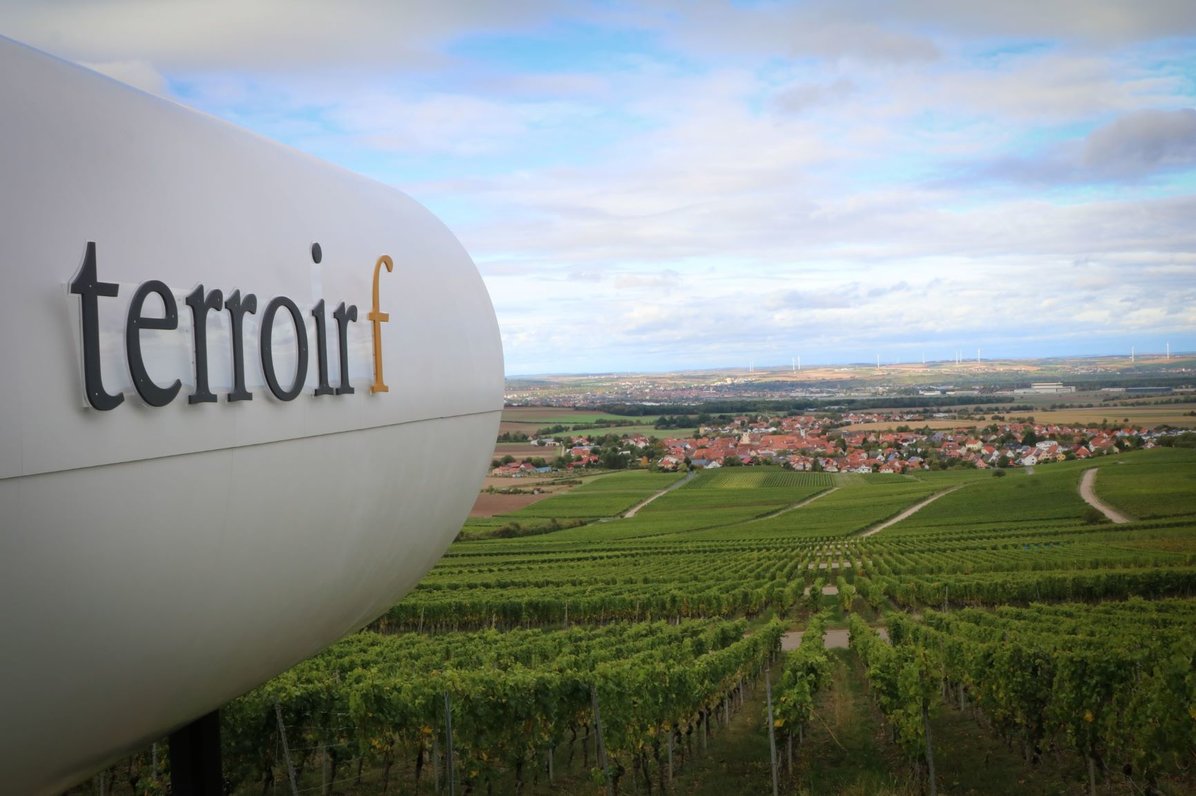
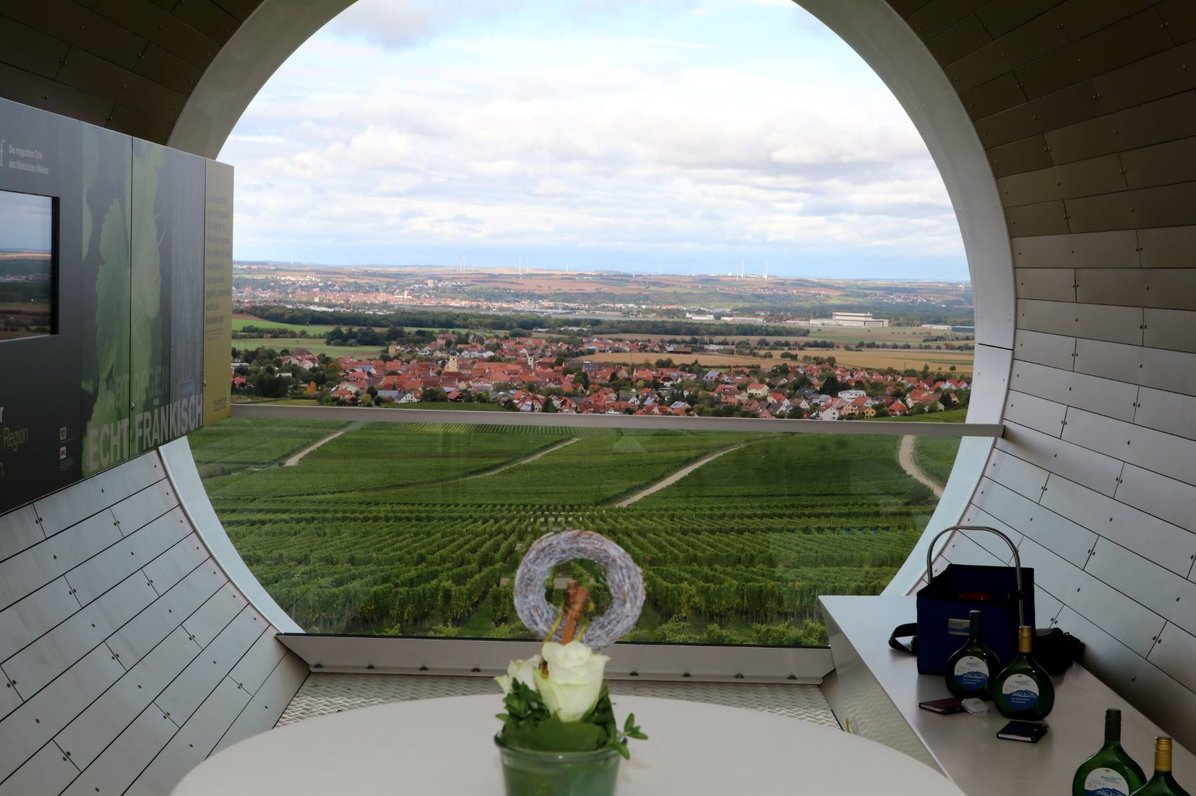
Es sind Orte, die auf ganz besondere Weise die Vielschichtigkeit einer Region ausstrahlen. Es sind Orte, die man im Gedächtnis behält. Orte, an denen einem der Ausblick den Atem raubt. Orte, die einen in der Landschaft lesen lassen wie in einem offenen Buch. In Franken haben diese magischen Orte einen Namen: "terroir f". In Rödelse "Silvaner – Identität einer Region – Echt fränkisch"
Schon von Weitem ist die beeindruckende bauliche Skulptur dieses magischen Ortes des Frankenweins zu erkennen. Oberhalb der Weinberge über Rödelsee und unterhalb des Waldes und der Einsiedelei am Schwanberg steht die Röhre auf ihrem Stahlgerüst und gewährt einen Fernrohr-Blick auf die Gemeinde Rödelsee und die Region.
Wie ein riesiges Fernglas öffnet sich dem Besucher beim Betreten die fränkische Kulturlandschaft weit in den schier unendlichen Horizont hinein. Im Innern wird die Geschichte des Silvaners, der ganz in der Nähe dieses magischen Ortes in Castell vor über 350 Jahren zum ersten Mal in Franken gepflanzt wurde, erzählt. Keine andere Rebsorte verkörpert das Fränkische Weinland, seine Menschen und natürlich seine Weine so sehr wie diese Rebsorte.
Er ist zugleich Seele und Identität der Weinregion Franken. Und nur eine wirklich große Rebsorte wie der Silvaner ist in der Lage vom einfachen herzhaften Schoppenwein über frische lebendige Orts- und Gutsweine bis hin zum großen trockenen Wein, den Großen Gewächsen hervorzubringen. Nach dem Genuss des einmaligen Panoramas wird es also dann höchste Zeit ein Glas Silvaner in Rödelsee zu genießen.
Aufenthalt am „terroir f“
Sie sind gerne unser Gast als Wanderer, Radfahrer und Tourist.
Das „terroir f“ kann bei der Gemeinde Rödelsee für Weinverkostungen reserviert werden.
Reservierungsanfragen (bitte wählen Sie terroir f aus).
Crailsheim Palace with its volute gable, built in 1614, served as the residence of the Rödelsee branch of the von Crailsheim family. The gate was decorated with stately lions on both sides in the 18th century. The Franconian Winegrowers’ Cooperative bought the building in 1954. Since then, the superb cellars have been used for the maturing and storage of Rödelsee’s delicious wines. A historical winepress dating from 1660 stands in the yard.
This formerly moated castle has been owned by the Barons von Crailsheim for over 450 years.
The original date of construction remains obscure. Before 1220, the Fuchs von Stockheim knights ruled over the area. The castle was destroyed during the Peasants’ War in 1525 and rebuilt in 1531. The stately two-storey building with its four wings, enclosing an inner yard, and its four round towers looks well-fortified and quite imposing.
Size: 18,927 square metres, located 265 metres above sea level, 600-metre enclosing wall
This cemetery, which once had 2,500 graves, is today one of the largest Jewish cemeteries still existing in Germany. Even areas that seem empty are occupied. The deceased from about 20 Jewish communities in the region were buried in Rödelsee.
In 1816, Rödelsee had 112 Jewish inhabitants (15.5 % of the population).
In 1900, 46 Jews still lived here.
All gravestones and the Star of David on the so-called “priest house” (= tool shed) face east (Jerusalem) so that the morning sun is immediately visible on resurrection day.
A Taharah House (purification house) stood in the middle of the cemetery. And a large well (diameter: 4 m, depth: 38 m, water level: approx. 17 m) was located nearby.
Now there is a memorial to the Jewish inhabitants of the cemetery district of Rödelsee who were murdered in the Holocaust. Nearby you can see a memorial to the local Jewish soldiers who fell in the First World War.
History:
- In 1432 and 1526, the cemetery was first mentioned in documents.
- In 1602, a wall and a Taharah House were built.
- On 10th Nov. 1938, SS-men set fire to the purification house.
- In 1939, gravestones were pushed over and destroyed.
- In 1942, the cemetery was closed.
- In 1945, the gravestones and the wall were repaired.
- In 1950, the ruined purification house was torn down. The stone washing table, with an inscription, was put up as a memorial.
- In 1981, unknown persons destroyed the memorial stone (replaced in 1983).
The cemetery is today managed by the Association of Jewish Religious Communities in Bavaria (Munich). A local association of friends of the former synagogue in Kitzingen (Förderverein Ehemalige Synagoge) works for the upkeep of the cemetery.
The cemetery key and information materials (in German) are available from:
- Tourist Information at Rödelseer Markt, Zehntgasse 1, 09323 3094 (or Mr. Peter Hess, 0171 6500739) or Förderverein Ehemalige Synagoge Kitzingen, Ms. Margret Löther, 09332 5124
- Guided tours are organized by Förderverein Ehemalige Synagoge Kitzingen, 09321 921244 and 4040
- Info on the Web: www.alemannia-judaica.de (in German) or google “Jewish Cemetery Rödelsee”.
Please note that men should cover their heads when visiting the cemetery.
On Saturdays (Sabbaths), Jewish cemeteries are closed to visitors, so there are no guided tours.
One of the outstanding buildings in the village is the former tithe house (early tax office) of the Counts of Castell, who also ruled over Rödelsee. It was built before 1648 in the renaissance style. In 1710, the splendid portal with the coat of arms was added. Today the building houses the restaurant “Der Löwenhof”.
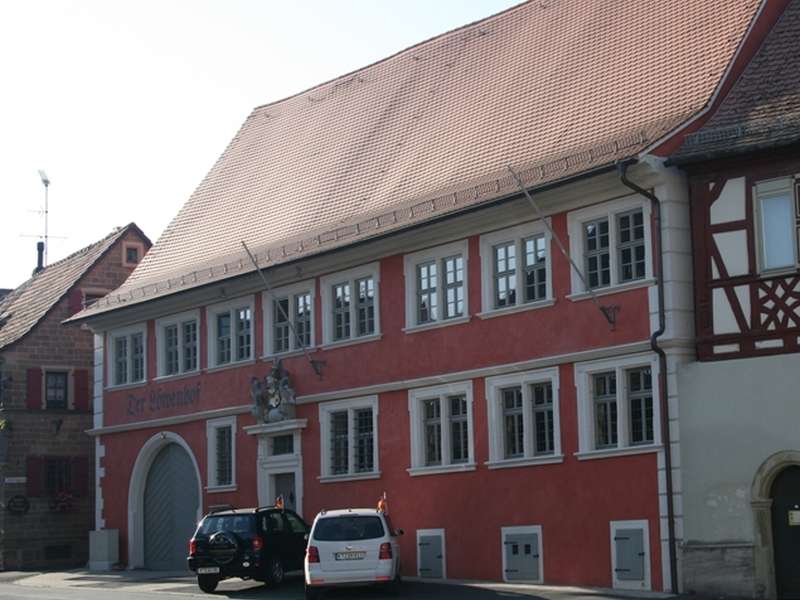
Aktuelles
Alle wichtigen Nachrichten und Meldungen der Gemeinde Rödelsee!
Anfahrt und Lage
So finden Sie zu uns
Erweiterte Suche
Sie haben eine Veranstaltung, einen Verein oder eine Firma gesucht?
Dann nutzen Sie bitte unsere spezielle Suche in den jeweiligen Rubriken.








